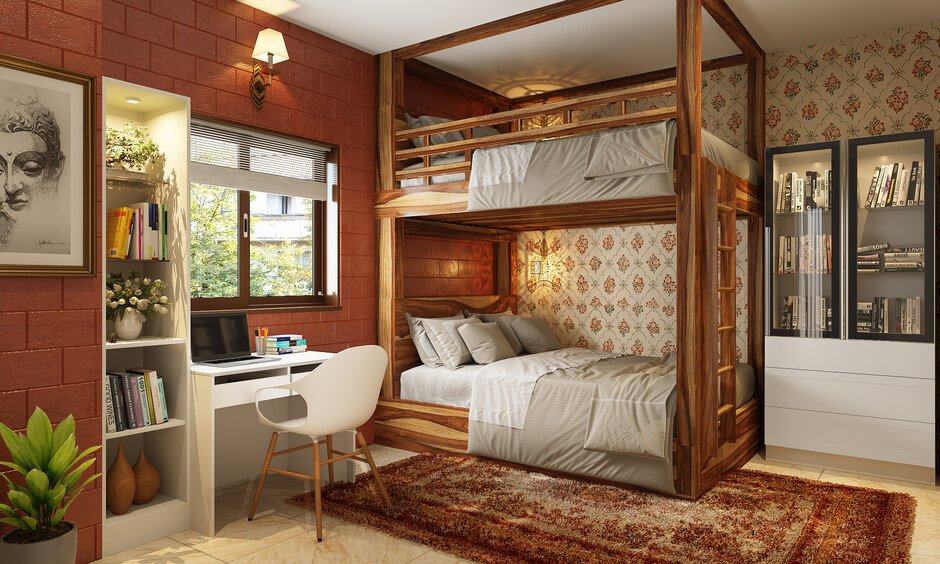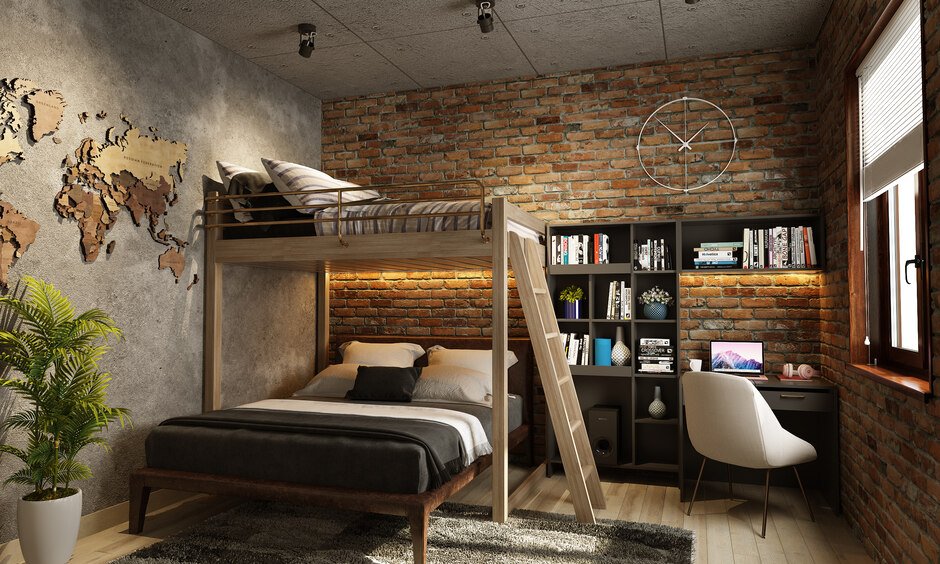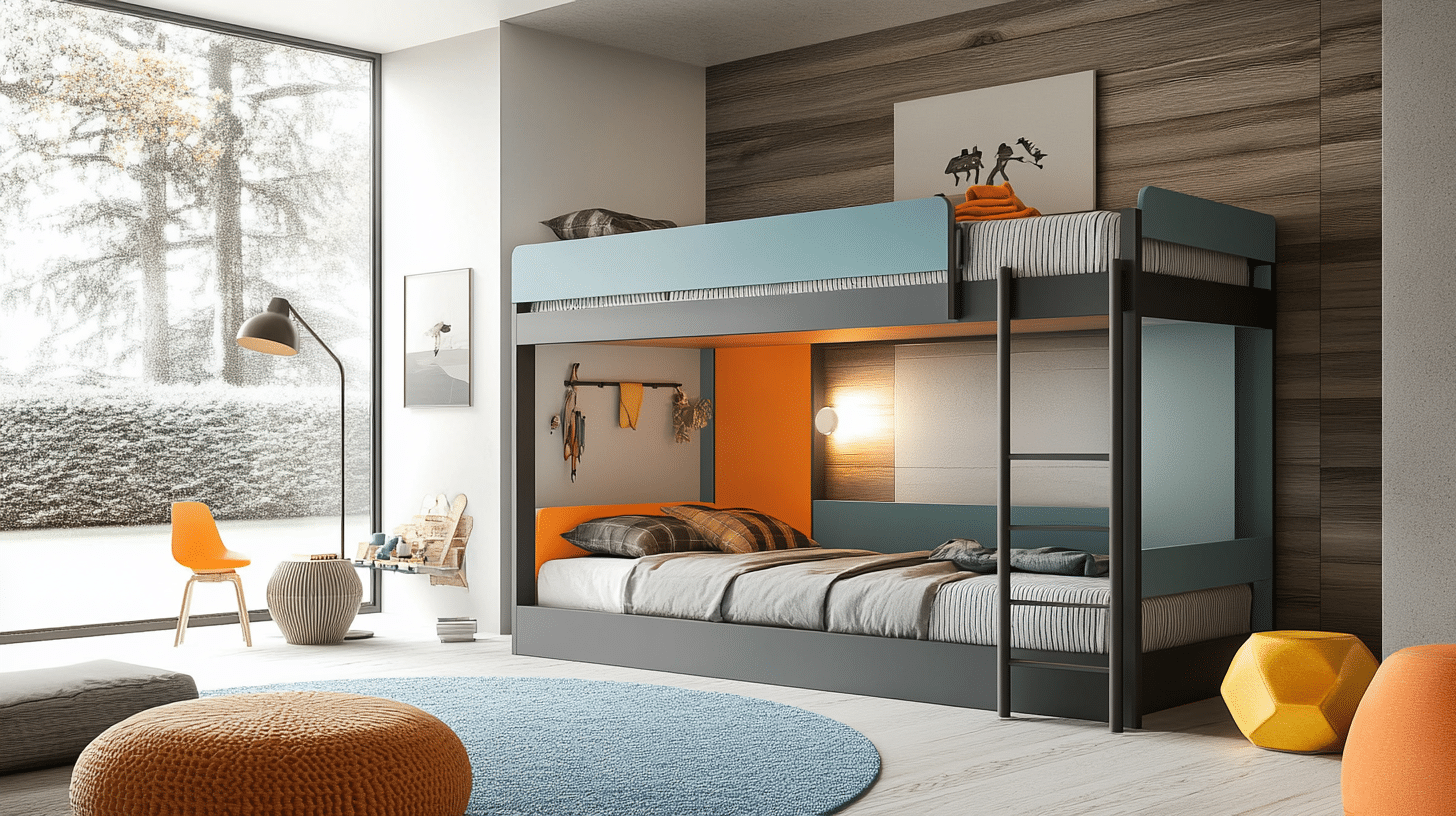Bunk beds have come a long way since their inception. Traditional designs focused primarily on functionality, providing space-saving sleeping arrangements for multiple people. Modern bunk beds, however, have evolved to offer much more than just practical sleeping solutions.
Today’s bunk beds blend style with substance, incorporating innovative features and sleek aesthetics. Modern bunk beds differ from traditional ones in their design versatility, enhanced safety features, and multifunctional capabilities.They often include built-in storage, integrated desks, and customizable configurations to maximize space utilization.
The materials used in modern bunk beds have also expanded beyond the typical wood frames. Metal, plastic, and even eco-friendly options are now available, catering to diverse tastes and interior design preferences. You can check out more bunk beds here, where contemporary designs offer a wide range of choices to suit various room sizes and styles.
Key Takeaways
- Modern bunk beds prioritize aesthetics alongside functionality
- Advanced safety features are standard in contemporary designs
- Multifunctional elements like storage and workspaces are common in newer models
Design and Aesthetics

Modern bunk beds showcase sleek lines, innovative materials, and multifunctional features that set them apart from traditional designs. These contemporary elements blend form and function to create stylish, space-efficient sleeping solutions.
Contemporary Styles and Materials
Modern bunk beds embrace minimalist aesthetics with clean lines and streamlined silhouettes. Metal frames in matte finishes or powder-coated colors offer a sleek, industrial look. Wood remains popular but with smoother surfaces and lighter tones like birch or ash.
Modular designs allow for flexible configurations, adapting to changing needs. Some models incorporate built-in desks, shelves, or storage drawers for added functionality.
Innovative materials like reinforced plastics and carbon fiber composites provide strength while reducing weight. These materials allow for more daring designs and improved portability.
Space-Saving Features
Modern bunk beds maximize vertical space with clever engineering. Fold-away ladders and retracting staircases improve accessibility without sacrificing floor area. Some designs feature hideaway beds that tuck into wall units when not in use.
Loft-style configurations elevate the sleeping area, creating usable space underneath for desks, dressers, or play areas. This versatility is especially valuable in small apartments or shared bedrooms.
Integrated storage solutions like built-in cabinets, floating shelves, and under-bed drawers help reduce clutter and optimize room layout. These features eliminate the need for additional furniture pieces.
Customization Options
Modern bunk bed designs offer extensive personalization choices. Modular components allow users to mix and match elements like bed sizes, orientations, and add-on features. This flexibility ensures the bed can grow and adapt with changing needs.
Color options extend beyond traditional wood tones to include vibrant hues and custom finishes. Some manufacturers offer digital design tools, enabling customers to visualize different configurations before purchasing.
Accessories like adjustable lighting, USB charging ports, and privacy curtains enhance functionality and comfort. These add-ons cater to diverse user preferences and lifestyle needs.
Functional Advancements

Modern bunk beds incorporate innovative features that enhance their functionality and user experience. These advancements focus on integrating technology, improving safety, and offering versatile design options.
Integrated Technology
Many contemporary bunk beds now come equipped with built-in USB charging ports and power outlets. This allows users to conveniently charge their devices without leaving the bed. Some models feature LED reading lights, providing focused illumination for late-night reading sessions.
Smart bunk beds are also entering the market. These incorporate features like:
- Bluetooth speakers for audio playback
- Motion-activated under-bed lighting
- Smartphone-controlled adjustable headrests
These tech integrations cater to the digital lifestyle of modern users, making bunk beds more than just sleeping spaces.
Safety Enhancements
Modern bunk beds prioritize safety with advanced features. Sturdy guardrails are now standard on upper bunks, often extending the full length of the bed. Many designs incorporate rounded edges and corners to prevent injuries.
Some key safety improvements include:
- Anti-slip ladder steps for secure climbing
- Reinforced joints and connections for increased stability
- Impact-resistant materials for added durability
Manufacturers also use non-toxic, fire-resistant finishes to ensure a safer sleeping environment. These enhancements provide peace of mind for parents and users alike.
Convertible Designs
Adaptability is a hallmark of modern bunk beds. Many designs allow for easy reconfiguration to suit changing needs. Some models can be separated into two individual beds as children grow older or room layouts change.
Convertible features often include:
- Modular components for custom arrangements
- Adjustable heights to accommodate different ceiling heights
- Detachable desks or play areas for multifunctional use
This flexibility extends the lifespan of bunk beds, making them a practical investment for families. It also allows for creative space utilization in smaller rooms or shared living spaces.
Conclusion
Modern bunk beds offer a fresh take on the classic space-saving design. They incorporate sleek aesthetics, innovative features, and a wider range of colors and materials. These updated versions cater to diverse needs and preferences, from minimalist styles to multifunctional units.
The evolution of bunk beds reflects changing lifestyles and interior design trends. Today’s options provide enhanced safety, comfort, and versatility for both children and adults. As living spaces continue to evolve, modern bunk beds stand out as practical and stylish solutions for maximizing room potential.

